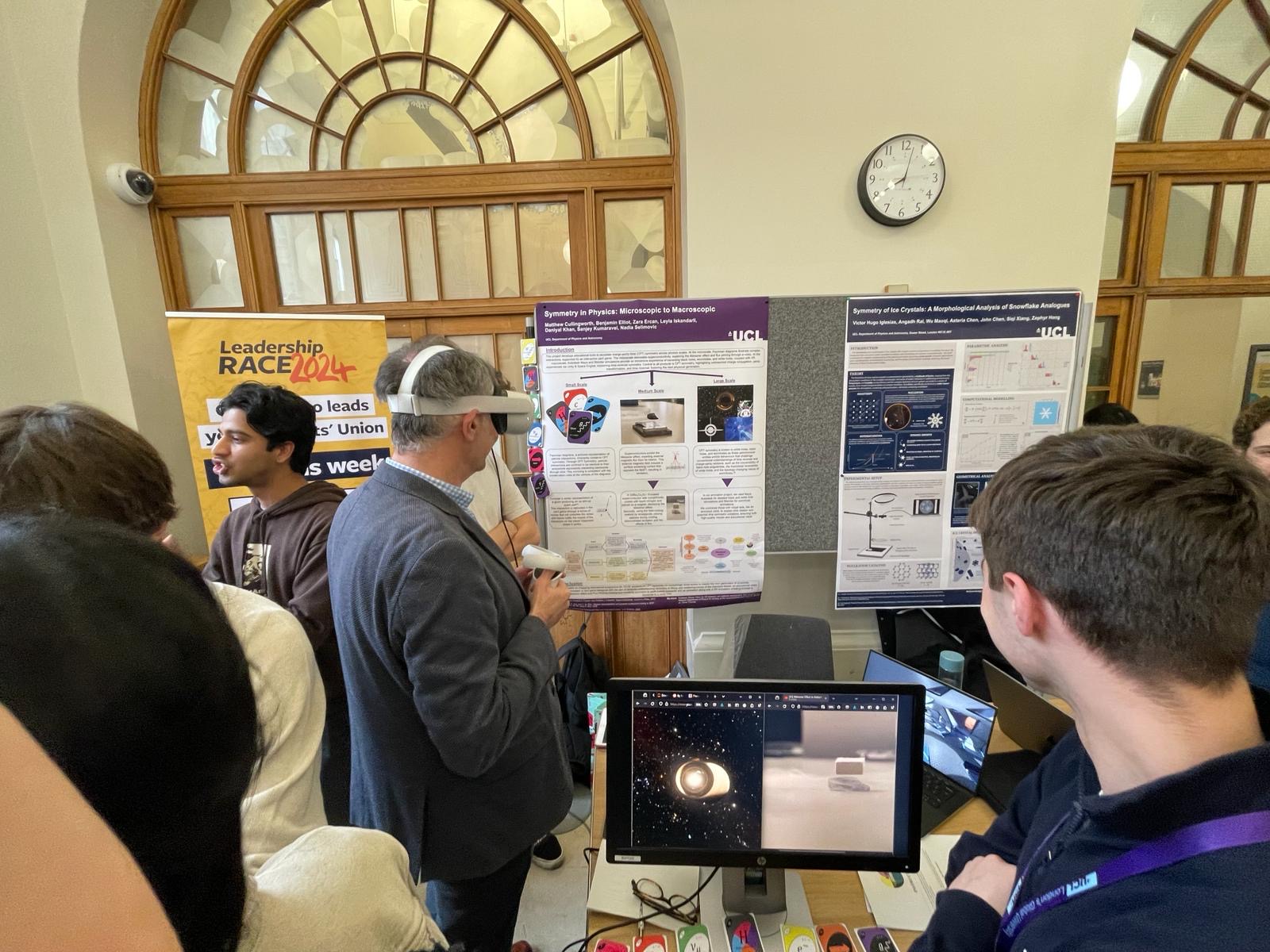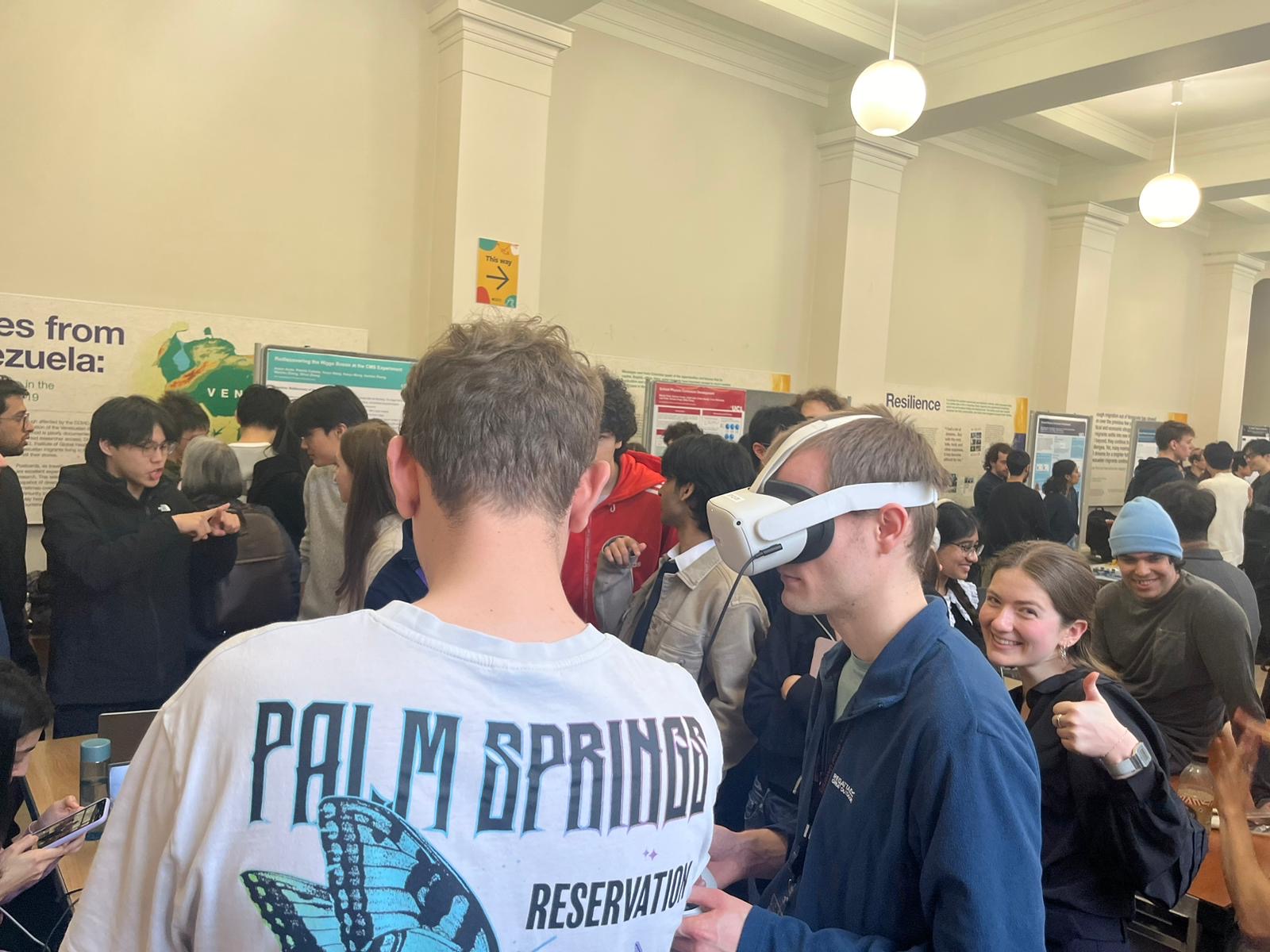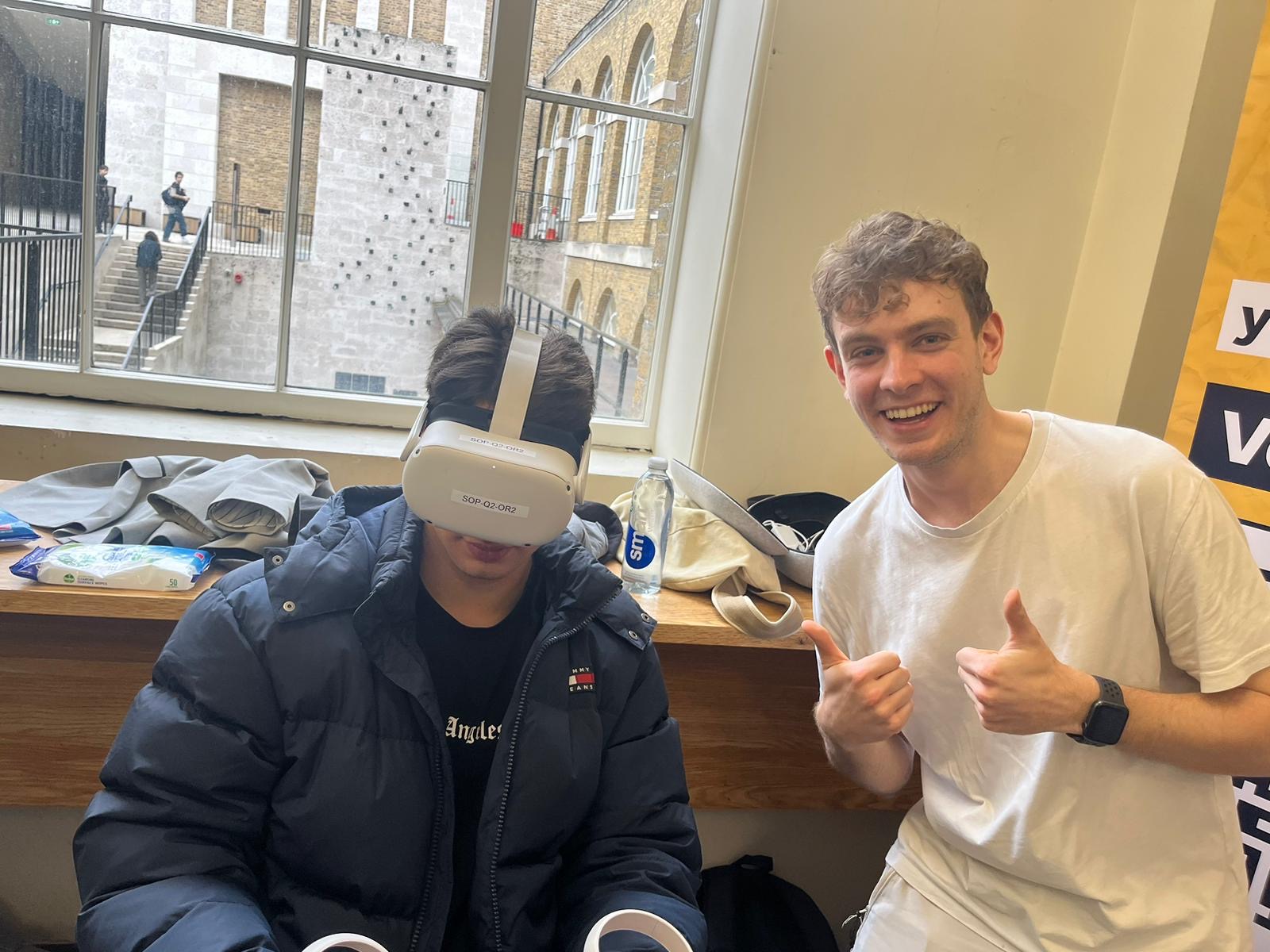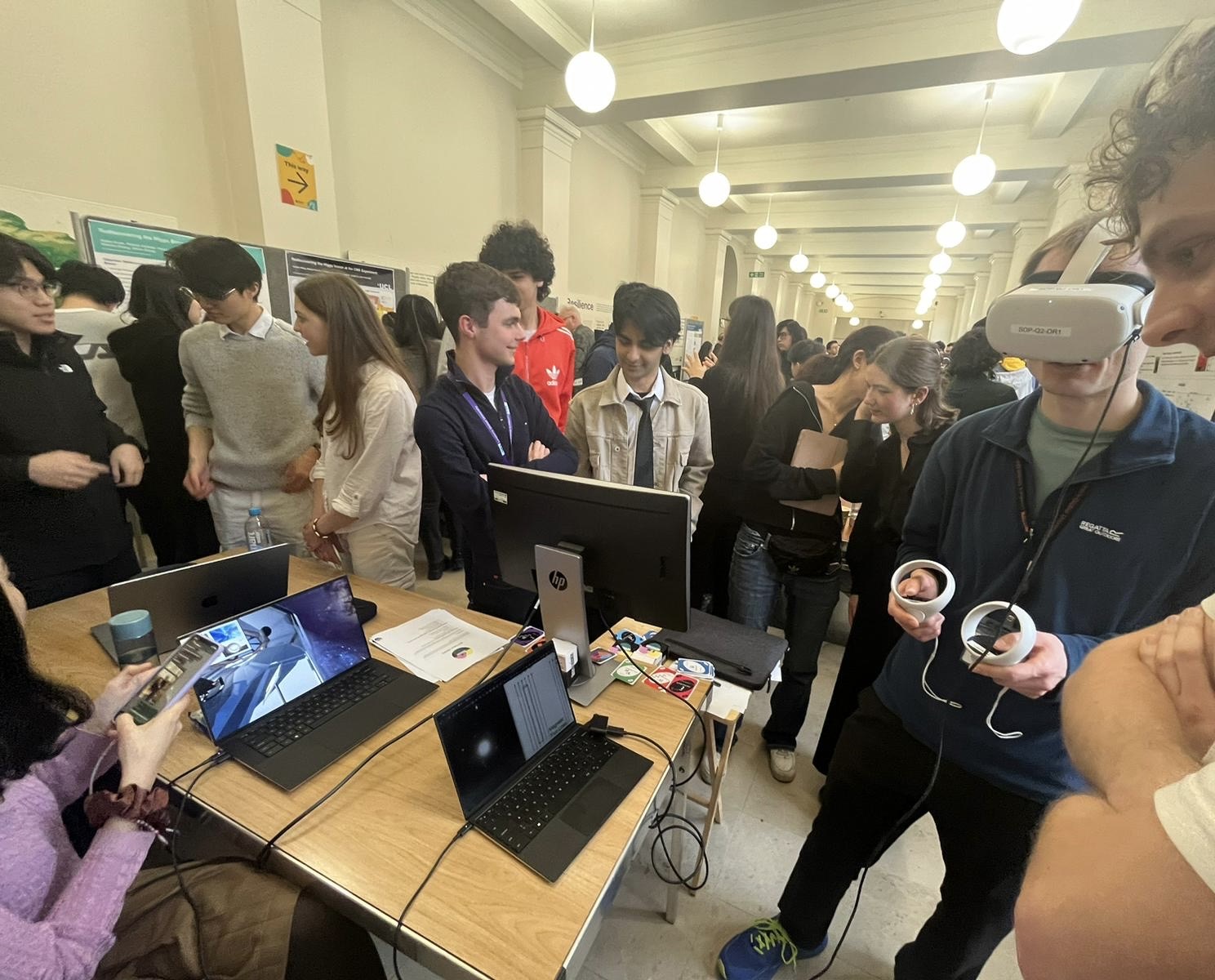Project Overview
This VR software project was developed by Dr. Stephen Hilton, an Associate Professor at the UCL School of Pharmacy, in collaboration with myself and other from UCL Physics. Our goal was to revolutionize the way physics is taught and learned. The software immerses users in a fully interactive space environment, where they can navigate a spaceship, explore stunning black holes, and experience wormhole traversal.
The project began when a group of UCL Physics students, including myself, approached Dr. Hilton to request VR headsets for testing other software. Inspired by our enthusiasm, Dr. Hilton embarked on creating this VR tool. Our team then contributed by developing educational content, AI avatars, and a 3D video of the Ellis wormhole traversal.
Features
- Immersive VR Experience: Dive into a fully interactive space environment.
- AI-Enabled Characters: Ask AI avatars any question, enhancing the learning experience.
- Wormhole Traversal: Experience the breathtaking journey through a wormhole.
- Educational Content: Includes educational videos and interactive whiteboards for real-time collaboration.
- 360 Video Integration: Enjoy a 360-degree video detailing wormhole traversal.
- Stunning Visuals: Explore visually inspiring black holes in VR.
Below, explore the mesmerizing journey through the wormhole with our immersive 360-degree video. Although the video quality is slightly affected by YouTube’s compression, it offers a captivating glimpse into the wormhole experience within the software, providing a rich, interactive visualization of this extraordinary cosmic phenomenon.
Benefits
- Education: Delivers high-quality, factual education through immersive experiences.
- Engagement: Enhances learning by combining educational videos, interactive AI, and collaborative virtual environments.
- Global Reach: Enables users to connect and collaborate with others worldwide, fostering a global learning community.
- Community Outreach: Inspires future physicists by providing an engaging and accessible platform for exploring advanced physics concepts.
- Understanding: Helps users grasp complex topics through immersive visuals and hands-on interaction, improving comprehension and retention.
Real-World Play-testing and Demos
The software has been showcased in several demonstrations, including sessions with students and staff at UCL. It has been met with positive feedback, particularly for its ability to make complex physics concepts accessible and engaging.
The project was also recognized as part of UCL's digital outreach program and is being used on Meta Quest 2 and Quest 3 headsets, providing a cutting-edge experience for users.




How To Play and Instructions
To get started with the SpaceLab software, you'll need to install it on your PC or VR headset. The software allows users to explore various virtual environments, interact with AI avatars, and engage with advanced physics concepts in an immersive way.
For PC users, download the software via Sidequest, ensuring that your headset is set to developer mode if you're using a Meta Quest 2/3. After installation, register your email, log in, and start exploring. For VR, navigate the app using either physical movement or teleportation for a more seamless experience.
For detailed instructions, please refer to the full instructions PDF which will open in a new tab, or view the pdf in the window below.
Development History
The project was initiated by Dr. Stephen Hilton, leveraging his extensive experience in VR and educational technology. My physics group contributed significantly by creating content and educational materials, including developing character sheets for AI avatars, generating the 3D video of the Ellis wormhole traversal, and producing educational videos on wormhole traversal.
Mark Fuller, Head of UCL Physics Outreach, has since joined the project, coordinating playtests of the software. I have been deeply involved in these playtests, suggesting further developments and helping run the software during demonstrations.
Future Goals
- Expand Content Library: Add more physics topics and interactive labs.
- Enhance AI Capabilities: Improve AI avatar responsiveness and personalize learning paths.
- Increase Accessibility: Develop mobile and web-based versions and partner with educational institutions globally.
- Build User Community: Host virtual workshops and events to foster a global learning community.
As we look to the future, we aim to significantly expand the reach and impact of this VR software, continuing to inspire the next generation of physicists.
Credits
Lead Developer: Dr. Stephen Hilton (UCL School of Pharmacy)
Physics Content Development & Contributions: Ben Elliot and Physics Group
Outreach & Play-testing Coordination: Mark Fuller (UCL Physics Outreach)
